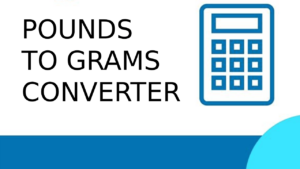There are a few different ways to calculate working capital, but the most common is simply current assets minus current liabilities (Calculate ROI). This will give you your total working capital. However, there’s also something called net working capital, which is a bit different. Net working capital is calculated by taking your current assets (minus cash) and subtracting your current liabilities (minus debt).
So basically, it’s everything you have on hand that could be used to pay debts if you needed to. Either way, working capital is an important number for businesses to keep track of, as it can give you an idea of how well they’re doing financially and whether or not they have the ability to meet their short-term obligations.
How do you calculate working capital for a small business?

To calculate working capital, you need to find a company’s current assets and current liabilities. This information can be found on the balance sheet. Current assets include cash, marketable securities, accounts receivable, and other liquid assets. Current liabilities are things like accounts payable, short-term debt, and accrued expenses. To get the working capital, you subtract the current liabilities from the current assets.
How many months of working capital should a company have?
A company should ideally have three months of working capital available, in case the business declines a bit after taking over. This cash cushion will help prevent any sort of cash crunch that could occur. inventory should also be taken into account when calculating how much working capital is necessary.
What are 3 examples of working capital?
Working capital is a Company’s short-term assets that are used to pay its current liabilities. Working capital is necessary for a company to maintain normal operations and cover immediate expenses, such as payroll or inventory purchases.
The three main components of working capital are: cash and cash equivalents, accounts receivable, and inventory. Cash and cash equivalents are the most liquid of all the assets on a company’s balance sheet. This includes money in checking or savings accounts, as well as investments that can be quickly converted to cash, such as money market funds and Treasury bills.
Accounts receivable is money owed to a company by its customers for goods or services that have been delivered. In other words, it is credit extended by the seller to the buyer. Typically, a company will allow 30 days for payment before considering the account delinquent.
Inventory is raw materials, work-in-progress (WIP), and finished goods a company has available for sale. Inventory is considered one of the most important assets on a company’s balance sheet because it represents future revenue.
There are a few different types of working capital, but some common ones include cash, accounts receivable, and short-term investments. Cash is probably the most obvious form of working capital. This includes money that a company has on hand, as well as any money that is coming in from customers (in the form of undeposited checks, for example).
Accounts receivable represents money that is owed to the company by its customers. This can be a significant source of working capital, although it’s important to note that not all of it may actually be collected. Companies typically have an allowance for bad debts, which represents money that is unlikely to be collected.
Short-term investments are another potential source of working capital. These are investments that a company intends to sell within one year. They might include things like Treasury bills or money market funds.
What is the formula for calculating working capital quizlet?
Working capital is computed as the difference between current assets and current liabilities. This calculation provides a snapshot of a company’s short-term liquidity and its ability to pay off its maturing obligations. Working capital is also an important component in a variety of other financial ratios, such as the quick ratio and the cash conversion cycle.
How do you calculate working capital in capital budgeting?
There are a few key things to remember when calculating working capital in capital budgeting. First, working capital is equal to current assets minus current liabilities.
Second, current assets are things like cash and equivalents, inventory, accounts receivable, and marketable securities. These are resources that a company owns and can convert into cash within a year.
Third, current liabilities are obligations that must be paid within a year, such as accounts payable and short-term debt. fourth, to get the most accurate picture of a company’s working capital, it’s important to use average values for both current assets and current liabilities.
This will give you a more accurate idea of the company’s typical cash flow situation. Finally, keep in mind that changes in working capital can impact a company’s ability to meet its financial obligations and should be taken into account when making decisions about investments and funding.
What is included in working capital?

Working capital, also known as net working capital (NWC), is the difference between a company’s current assets—such as cash, accounts receivable/customers’ unpaid bills, and inventories of raw materials and finished goods—and its current liabilities, such as accounts payable and debts.
In general, a company with a positive NWC can pay its short-term obligations, while a company with a negative NWC may have difficulty doing so. Many companies strive to maintain a positive NWC, as it provides them with the resources they need to grow and expand their operations.
What is the formula for calculating work capital?
Yes, the working capital calculation is Working Capital = Current Assets – Current Liabilities. However, it’s important to keep in mind that this is just a general guide – every company’s situation is different and you should always consult with an accountant or financial advisor to get the most accurate information for your specific case.
What is 6 months of working capital?
Assuming you would like an answer to the question posed: The Estimated 6 Month Working Capital Amount is the amount of working capital that will be required by the company for the next six months. This is calculated by taking the Working Capital Cushion Amount and subtracting any expected decreases in working capital during that time period.
What are the 4 main components of working capital?
Cash and cash equivalents are the most liquid of all assets on the balance sheet. Accounts receivable is money owed to a company by its customers for goods or services that have been delivered or used but not yet paid for.
Inventory, also known as stock, refers to the raw materials, finished products, and semi-finished products which a business holds for sale. Accounts payable is money owed by a company to its suppliers for goods or services that have been received but not yet paid for.
What is working capital give an example?
Working capital refers to the amount of money that a company needs to finance its day-to-day operations. For example, a manufacturer might have $100,000 in working capital, which is calculated by subtracting the company’s current liabilities of $200,000 from its current assets of $300,000. Working capital is important because it allows companies to pay for the costs of their everyday operations, such as rent, utilities, and payroll.
Without enough working capital, a company would quickly become insolvent and be unable to continue operating. Fortunately, there are a few ways that companies can increase their working capital. One way is to simply increase the amount of cash on hand.
This can be done by making more sales or by taking out loans. Another way to increase working capital is to decrease the amount of money that the company owes to creditors. This can be accomplished by paying off debts or negotiating payment terms that are more favorable to the company.
Increasing working capital is often essential for businesses that are growing rapidly or facing unexpected expenses. By ensuring that they have enough money to cover their short-term obligations, companies can avoid financial difficulties and keep their operations running smoothly.






